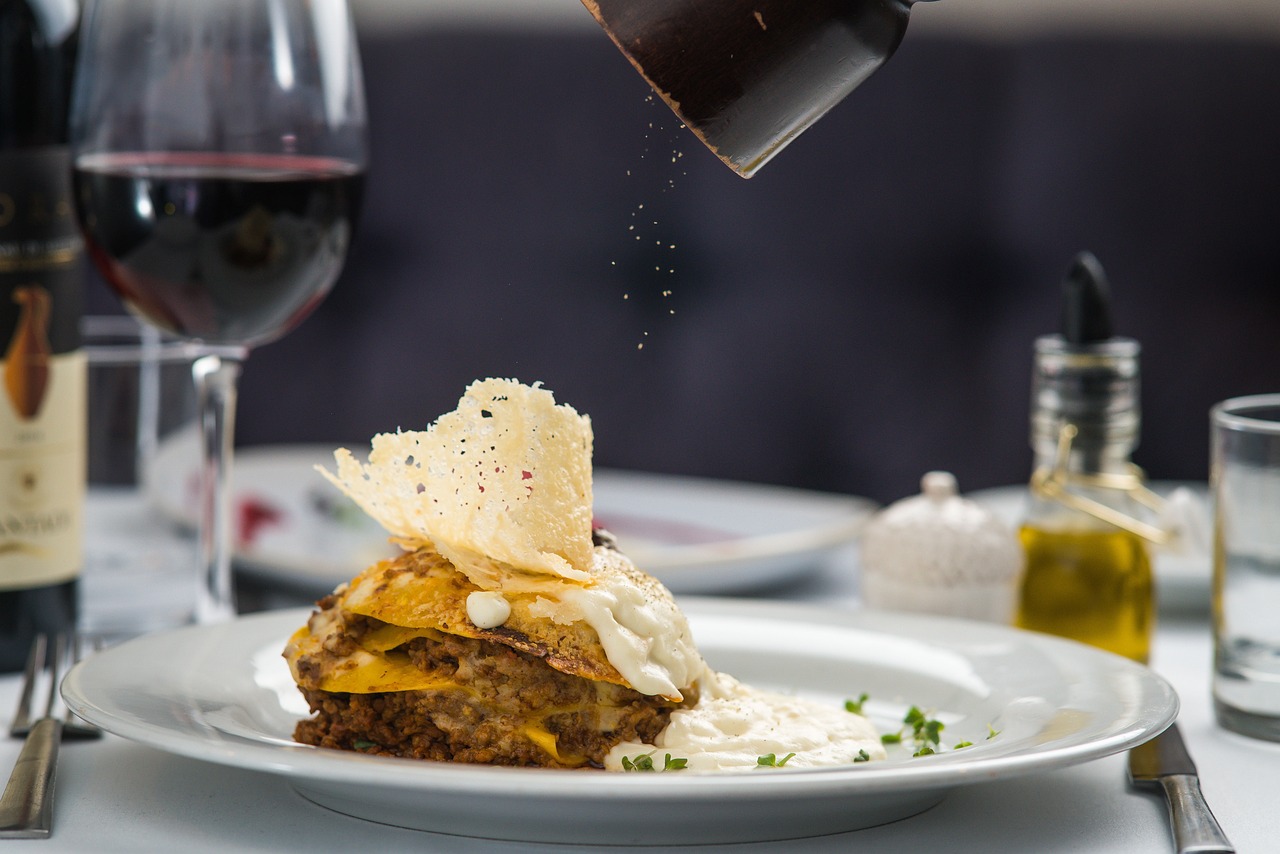Running a small restaurant can be a rewarding endeavour, but it comes with its own set of challenges, particularly when it comes to attracting a steady stream of customers. While larger establishments might benefit from substantial marketing budgets and brand recognition, smaller restaurants must often rely on creativity, personal touch, and strategic planning. This article explores effective strategies for small restaurants to attract more customers, incorporating real industry statistics and studies from the UK restaurant business.
Understanding Your Customer Base
Before diving into specific strategies, it is crucial to understand your target audience. Knowing who your customers are – their preferences, habits, and needs – allows you to tailor your efforts more effectively. Conducting surveys, engaging with customers on social media, and analysing existing sales data can provide valuable insights. Once you have a clear picture of your ideal customer, you can create targeted marketing campaigns and menu offerings that appeal directly to them.
Leveraging Digital Marketing
In today’s digital age, a robust online presence is essential for attracting new customers. Here are some key components of an effective digital marketing strategy for small restaurants:
1. Social Media Engagement
Social media platforms such as Facebook, Instagram, and Twitter offer cost-effective ways to reach potential customers. According to a 2020 study by the National Restaurant Association, 63% of consumers say they are more likely to visit a restaurant after seeing social media posts featuring the establishment’s food and atmosphere.
- Visual Content: High-quality photos and videos of your dishes can be particularly engaging. Instagram, with its focus on visual content, is an ideal platform for showcasing your culinary creations.
- Interactive Content: Encourage customer interaction through polls, Q&A sessions, and contests. User-generated content, such as customers posting their own photos of your food, can also boost your visibility.
2. Local SEO
Optimising your restaurant’s online presence for local search is crucial. This involves ensuring that your restaurant appears in local search results and on maps when potential customers search for dining options in your area. A 2018 study by BrightLocal found that 86% of consumers rely on the internet to find a local business, highlighting the importance of a strong online presence.
- Google My Business: Claiming and updating your Google My Business profile can significantly improve your local SEO. Ensure that your business information is accurate, and encourage satisfied customers to leave reviews.
- Local Keywords: Incorporate local keywords into your website and blog content. For example, if you run an Italian restaurant in Manchester, phrases like “best Italian restaurant in Manchester” should be naturally integrated into your site.
3. Email Marketing
Building an email list allows you to reach customers directly with news, promotions, and special offers. Offering a small discount or freebie in exchange for email sign-ups can help grow your list. According to the Data & Marketing Association, email marketing has an average ROI of £32 for every £1 spent.
- Regular Newsletters: Send out regular newsletters with updates about new menu items, upcoming events, and exclusive offers. Personalising these emails based on customer preferences can increase engagement.
- Loyalty Programs: Use your email list to promote loyalty programs that reward repeat customers with discounts or free items.
Enhancing the In-Restaurant Experience
While attracting customers through digital marketing is important, ensuring they have an excellent experience once they arrive is equally crucial. Here are some strategies to enhance the in-restaurant experience:
1. Exceptional Customer Service
Providing outstanding customer service can turn first-time visitors into regulars. A 2019 report by PWC found that 73% of consumers cite customer experience as an important factor in their purchasing decisions.
- Personalised Service: Make an effort to remember regular customers and their preferences. Small touches, like greeting them by name, can make them feel valued.
- Feedback: Encourage and act on customer feedback. Addressing concerns promptly and visibly making improvements can demonstrate your commitment to customer satisfaction.
2. Ambiance and Cleanliness
The ambiance of your restaurant plays a significant role in the overall dining experience. Creating a welcoming and pleasant atmosphere can encourage customers to stay longer and return more often.
- Interior Design: Invest in a comfortable and attractive interior design that reflects the theme of your restaurant. Consider elements like lighting, music, and seating arrangement.
- Cleanliness: Ensure that your restaurant is spotless at all times. This includes dining areas, restrooms, and the kitchen. A clean environment reassures customers about the quality of your establishment.
3. Unique Selling Proposition (USP)
Having a unique selling proposition can set your restaurant apart from competitors. This could be a signature dish, a unique dining experience, or a special theme.
- Signature Dishes: Develop and promote dishes that are unique to your restaurant. These can become talking points and draw in customers looking to try something new.
- Themed Events: Hosting themed nights, such as a weekly jazz night or a monthly wine tasting, can attract a crowd and create a buzz around your restaurant.
Strategic Partnerships and Community Engagement
Building relationships within your community and forming strategic partnerships can further enhance your restaurant’s visibility and appeal.
1. Collaborations with Local Businesses
Partnering with local businesses can create mutually beneficial opportunities. For example, you could collaborate with a nearby bakery to offer exclusive desserts or with a local brewery for a special beer night.
- Cross-Promotions: Work with other local businesses to cross-promote each other. This could involve joint marketing campaigns, special offers, or co-hosted events.
- Local Suppliers: Sourcing ingredients from local suppliers not only supports the local economy but can also be a selling point for customers who value sustainability and freshness.
2. Community Involvement
Being actively involved in your community can build goodwill and brand loyalty. Participate in local events, sponsor community activities, and support local charities.
- Event Participation: Take part in local food festivals, fairs, and markets. These events provide an opportunity to showcase your food to a wider audience.
- Charity Work: Supporting local charities through donations or fundraising events can enhance your reputation and demonstrate your commitment to the community.
Innovative Marketing Techniques
In addition to traditional marketing methods, consider incorporating some innovative techniques to attract more customers.
1. Influencer Marketing
Partnering with local influencers can boost your restaurant’s visibility. Influencers have dedicated followings and can introduce your restaurant to a broader audience. A 2019 survey by Influencer Marketing Hub found that businesses earn $5.20 for every $1 spent on influencer marketing.
- Food Bloggers: Invite local food bloggers to dine at your restaurant in exchange for a review or a feature on their social media. Their followers trust their recommendations, which can drive new customers to your door.
- Micro-Influencers: Collaborate with micro-influencers, who have smaller but highly engaged audiences. They are often more affordable and can provide a more authentic promotion.
2. Customer Loyalty Programs
Implementing a customer loyalty program can encourage repeat visits and build long-term customer relationships.
- Rewards System: Offer a rewards system where customers earn points for each visit or purchase, which can be redeemed for discounts or free items.
- Exclusive Offers: Provide exclusive offers and early access to new menu items for loyalty program members.
3. Special Promotions and Limited-Time Offers
Special promotions and limited-time offers can create a sense of urgency and encourage customers to visit.
- Happy Hours: Offering discounted drinks and appetisers during a designated time can attract customers during slower hours.
- Seasonal Menus: Introduce seasonal menus that take advantage of fresh, local ingredients. Limited-time offerings can entice customers to return to try new dishes.
Utilising Technology
Incorporating technology into your operations can streamline processes and enhance the customer experience.
1. Online Reservations and Ordering
Offering online reservations and ordering can make it more convenient for customers to dine with you. According to a 2019 report by OpenTable, 85% of diners in the UK say they are more likely to choose a restaurant if it offers online reservations.
- Reservation Systems: Use online reservation systems to allow customers to book tables easily. This can also help you manage seating and reduce wait times.
- Online Ordering: Provide an option for customers to place orders online for delivery or takeaway. This can expand your customer base to those who prefer dining at home.
2. Mobile Apps
Developing a mobile app for your restaurant can provide a convenient way for customers to interact with your business.
- App Features: Include features such as online ordering, loyalty program management, and push notifications for special offers and events.
- User Experience: Ensure that the app is user-friendly and provides a seamless experience.
Monitoring and Adapting Strategies
Lastly, it is essential to continually monitor the effectiveness of your strategies and adapt as needed. Use analytics tools to track the performance of your marketing campaigns and customer feedback to make informed decisions.
1. Data Analysis
Regularly analyse sales data, customer feedback, and marketing metrics to identify trends and areas for improvement. According to a 2018 study by Deloitte, data-driven companies are 23 times more likely to acquire customers and 19 times more likely to be profitable.
- Customer Insights: Use data to gain insights into customer preferences and behaviours. This can help you refine your menu, service, and marketing efforts.
- Performance Metrics: Track key performance metrics, such as website traffic, social media engagement, and sales figures, to evaluate the success of your campaigns.
2. Flexibility
Be prepared to adapt your strategies based on what the data tells you. What works today might not work tomorrow, so maintaining flexibility and a willingness to experiment with new ideas is crucial.
- Continuous Improvement: Regularly seek feedback from customers and employees to identify opportunities for improvement.
- Stay Updated: Keep up with industry trends and emerging technologies to stay ahead of the competition.
Conclusion
Attracting more customers to a small restaurant requires a multifaceted approach that combines digital marketing, exceptional customer service, community engagement, and innovative techniques. By understanding your customer base, leveraging online platforms, creating a memorable in-restaurant experience, and continually adapting your strategies, you can build a loyal customer base and drive sustainable growth for your restaurant. Remember, the key is to stay connected with your customers, understand their needs, and consistently deliver value and quality in every aspect of your business. With the right approach and dedication, small restaurants can thrive in a competitive market and become beloved fixtures in their communities.




